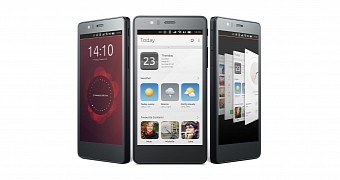Ubuntu Touch is now available by default in three phones, the Bq Aquaris e4.5, Bq Aquaris e5 HD, and Meizu MX4 Ubuntu Edition, and it looks like Canonical plans to support them for as long as possible.
Support for an operating system is an important aspect when you consider the purchase of a new phone. When you're dealing with systems like Android or Windows Phone, you don't really know what you're getting into. When you buy a mobile device from HTC, for example, you might as well play the lottery. The support for that phone could end tomorrow, and you will never know.
In the open source world, things are a little bit different. Yes, it could happen here as well, and developers sometimes stop supporting applications for no obvious reason, but big companies like Canonical are a little bit more transparent and have much more precise goals. For example, they know well ahead of time just how long a system will be supported and they keep to that schedule no matter what.
The mobile platform is esoteric and difficult to predict
It's often difficult to anticipate ahead of time just how long you are going to support a particular phone. Take Nexus 4 for example, it's still being supported two years later, and there is no sign that they plan to replace it anytime soon.
And there is also good news for the users of the aforementioned Ubuntu phones. The Ubuntu Community managers answered a question regarding the support for the Bq e4.5, and what they said can be applied to all the platforms. A user named Blue Dragon transcribed the answer from the managers in a blog post.
"Indefinitely, or at least as long as it is technically possible. There is no planned EOL target date. However it is a tiny bit dependant on the manufacturer. They did also say that in terms of updates they definitely plan to handle that better than Android does. They have mentioned that this is possible because the system is now well layered into multiple layers, so they are able to update the base system layer without interfering with the OEM layer," reads the blog post.
You can also check the full Q&A session below.

 14 DAY TRIAL //
14 DAY TRIAL // 